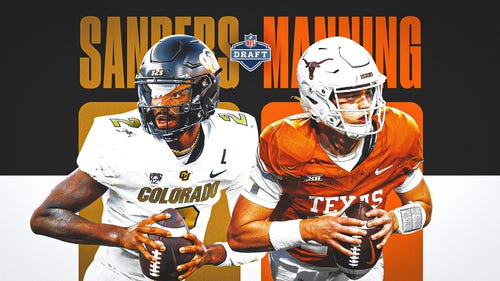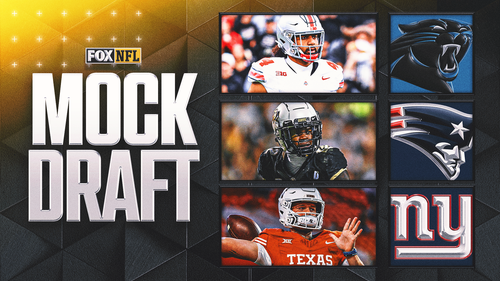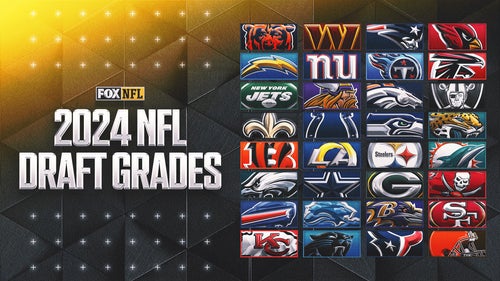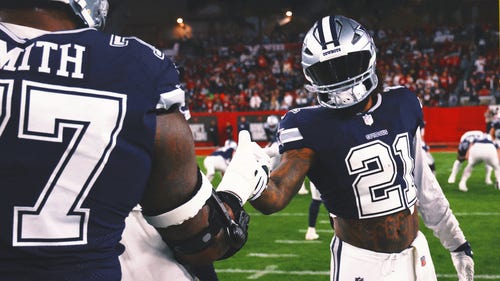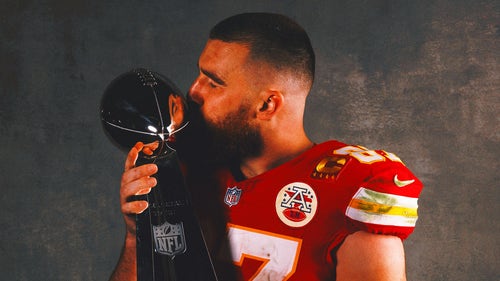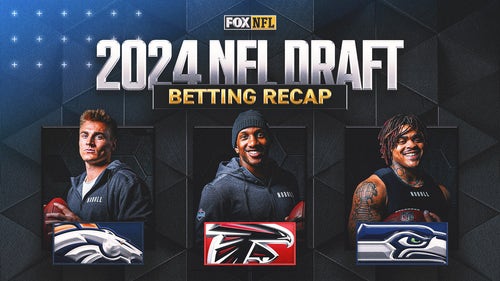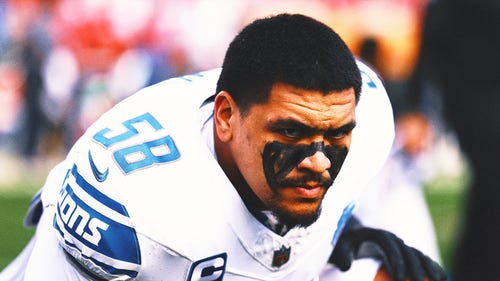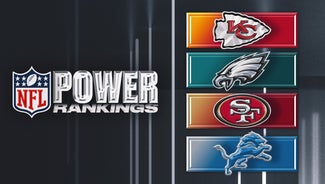
Trades make sense with new NFL math
A friend was recently telling a story about the late George Young and how the former New York Giants general manager was totally against trading on draft day.
“What if you were guaranteed that eight of your 10 trades would turn out to be big wins for your franchise?”
“I still wouldn’t do it,” was Young’s reply.
Young was being foolish, I think, because player selection, projecting how well college athletes will perform on the next level, is no sure thing.
However, trading into the top of the first round is a much better move today because the long-term salary repercussions are palatable. Before the rookie salary cap, NFL teams hated to be paying “quarterback-like” money to offensive tackles, or any position for that matter. A few years ago, no one wanted to be in the top of the first round because they rarely saw value while being fearful of making a costly personnel mistake that would mess with the team’s salary cap going forward.
The Miami Dolphins and St. Louis Rams did that in 2008 and 2009 when offensive tackles Jake Long went first overall and Jason Smith went second overall, respectively. Long has been a solid performer, but Smith has struggled with the Rams, who recently cut his salary virtually in half in order to retain his services for his fourth season. And both of these players received bonuses like they were quarterbacks and instantly became among the top five highest paid players on their teams.
In those drafts, too, there were virtually no teams willing to trade into those slots because of the salary demands from agents representing the rookies. Back then, the league had a slotting system for salaries for the top picks and annually the total contracts increased by eight percent or more. The sky was the limit for the rookies.
The owners’ bargaining agreement last summer with the players — with veteran players calling the shots — drastically reduced the financial windfall for first-round picks. It’s still good money — Andrew Luck will probably get $23 million over four years — but not the $36 million curse that the Raiders absorbed for taking quarterback JaMarcus Russell with the first overall pick in 2007. Granted, there were quarterbacks available in both the 2008 and 2009 drafts.
First, the Dolphins passed on Matt Ryan, who has become the franchise face of the Atlanta Falcons. Ryan went third in the first round. And in 2009, after much consternation, the Lions came to their senses and took Matthew Stafford with the first overall pick. Stafford earns more than double what Cam Newton does in Carolina and what Luck and Robert Griffin III will collect over the first four years of their contracts, but the Lions aren’t complaining because they believe they hit a home run with the Stafford selection.
Believe me, that’s exactly how general manager Bruce Allen and owner Daniel Snyder feel about the future of RG3 in Washington. They believe Griffin has tremendous upside for a franchise that hasn’t had a famous quarterback face since Joe Theismann. Heck, some in Washington may say they haven’t had a great quarterback since Sonny Jurgenson.
This is why the Redskins swapped first-round picks with the Rams this year and gave up two more first-round picks and a second-round pick (39th overall) this year in order to take a quarterback. Allen swallowed hard on the compensation that he’s giving the Rams, but the Redskins had to pull the trigger. The rookie salary scale not only means that the salary is locked into place but also that RG3 will be in camp on time, which ensures that the rookie will be up to speed on the offense before the season starts Sept. 9 in New Orleans.
Just two years ago, rookies were constantly holding out and squeezing teams for more money. Russell missed the entire preseason before signing a long-term contract with the Raiders and that’s why he got off to such a horrible start in the NFL. It happened all the time under the old system as teams tried to hold the line on the slot price while agents tried to bust through the roof or pad a rookie’s contract with incentives or extra guaranteed money.
Probably the exception to the no-trade atmosphere in the NFL came in 2009 when the Jets decided that Mark Sanchez, a one-year starter at USC, was worthy of the franchise quarterback label and traded up to the fifth spot in 2009 to get him. But, remember, the NFL is a quarterback-driven enterprise and if teams don’t have one, they will risk the future and the payroll department to get one. Sanchez has taken some heat for his erratic play lately, but he was the starter on teams that went to consecutive AFC Championship Games. Sanchez is also making great money in New York, but the Jets still believe it was the right move to make at the time.
Go back to 2001, and there were nine trades in the first round, including five in the first 10 picks. That’s the last time that has happened, but reality says that will happen again as long as the talent and the needs are there. That was the year the Chargers traded their first overall pick so the Atlanta Falcons could draft Michael Vick. It didn’t end so well for the Falcons, but Vick did pack the Georgia Dome and took the franchise to an NFC Championship Game.
But if you accept George Young’s reluctant trading theory, some of the other trades in the first round were colossal blunders. Receiver Koren Robinson had a drinking problem and proved a problem for Seattle with the ninth overall selection. The Packers followed with another trade for defensive end Jamal Reynolds at No. 10. Reynolds failed to start a game in three seasons and left the game with a total of three sacks. Left tackle Kenyatta Walker was a bust for the Bucs at No. 14 as was defensive lineman Damione Lewis for the Rams at No. 12.
The draft has a history of picks being traded in the bottom two-thirds of the first round, but most believe there will be more top 10 trading like what Washington did this year and Atlanta accomplished last April because salary figures are locked in. The Falcons paid a steep price for Alabama receiver Julio Jones (sixth overall) but they would do the same deal again because they believe he’s the potential No. 1 receiver for when Roddy White slows down and because the salary price was right. And Jones does look like a big-time playmaker.
Now, Jacksonville may regret trading a year ago into the 10th overall spot for Blaine Gabbert, but the Jaguars did have a quarterback need. Some say they still do.
Consequently, there has been a lot of discussion recently about Texas A&M quarterback Ryan Tannehill and whether or not a team will take him in the top 10 or trade into the top 10 to get him. His fifth-year salary could end up being the average of the game’s top 10 quarterbacks after he’s been in the league three seasons.
“I’ve read all the hand-wringing over having to pay this kid down the line,” one general manager told me, “but if he’s the real deal and proves it on the field, no one will care about paying him a lot of money. All of us want a great quarterback and are willing to pay whatever it takes. If the kid is a bust, you simply opt out of the deal and admit you made a poor draft choice.”
Once again, this is why the Redskins paid such a steep compensation price for RG3. At the moment, the salary numbers are a perfect fit for Washington. And if RG3 becomes the player they think he will be, Daniel Snyder won’t mind paying him Peyton Manning-like money.






































































































































